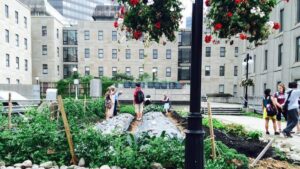Benchmarks Are Shifting
In order to get a benchmark on the critical mass required to survive in today’s fast paced industry, Seed World surveyed leaders across the country.
Trait Provider $1 billion
Breeding Company $250 million
Independent Corn and Soy Company $20 million
Vegetable Company $20 million
Turf/Forage Company $10–$15 million
Organic Seed Company $5 million
Agro-dealer $5 million
The Thirst
Water is becoming THE new emerging issue in the question of agricultural resources and nowhere is this better evidenced than in the United States itself, particularly in the fruit and vegetable sector. Scary truth—virtually 60 percent of national vegetable production occurs in two water-short states.
Fresh Vegetable Production States (% of US Total 2008)
State Area Harvested Production Value
Arizona 6.8% 7.4% 7.0%
California 44.1% 49.1% 50.4%
Florida 10.9% 9.5% 14.9%
Georgia 6.2% 4.9% 4.4%
New York 3.8% 3.6% 3.9%
Source: USDA
Skyscaping
“We’re still seeing strong demand for summer flower annuals, but the biggest trend is growing in containers. Known as urban and suburban gardens or urban farms, these are empty lots or places in cities where community gardens can be grown or people are growing veggies in containers on patios in urban areas. Chicago is also booming with green roofs or ‘skyscaping’—growing plants and flowers on the tops of buildings.”—Nona Wolfram-Koivula, past executive director of All- America Selections and the National Garden Bureau
International Year of Biodiversity
The United Nations proclaimed 2010 to be the International Year of Biodiversity so the entire world would focus on the urgency of our challenge for the future. The main goals were to:
-
Enhance public awareness of the importance of conserving biodiversity and of the underlying threats to biodiversity
-
Raise awareness of accomplishments to save biodiversity realized by communities and governments
-
Promote innovative solutions to reduce the threats to biodiversity
-
Encourage individuals, organizations and governments to take immediate steps to halt biodiversity loss
-
Encourage dialogue between stakeholders for the steps to be taken post-2010
FUSE : Sparking Interest in the Seed Industry
“Trying to reach the point where we can feed the world—it’s all really exciting for me, watching it evolve in my lifetime has been amazing, so I can’t imagine what the future holds: that’s what keeps me interested,” says Michael Fosdick, a member of the Future Seed Executives and one of six university students awarded a grant to attend ASTA’s annual convention this past June. “There are so many opportunities and so much you can do with agriculture … And there’s always feeding the world.”
European Commission Proposes New Approach to GMOs
“It seems at least questionable, if not wishful thinking, to predict that ministers would go to Brussels and approve a new GMO one week, only to ban it in their home country the week after. Many, therefore, characterize the commission’s new policy as a ‘passing of the black jack’ rather than a ‘breaking of the deadlock.’ It has been exactly the lack of political leadership and willingness to take responsibility that got Europe into its current political and economic isolation in the use of modern biotechnology in agriculture; unfortunately, the new proposals of the Commission don’t suggest the lesson has been learned.”—Garlich von Essen, secretary general of the European Seed Association
RRA Debate
Both sides are claiming a victory in the June 21, 2010, U.S. Supreme Cour t 7–1 majority ruling that overturned a nationwide ban on Roundup Ready alfalfa.
“The good news about the decision is that it reaffi rms the USDA as the regulatory methodology of how technologies move forward,” says Mike Vande Logt, executive vice president and COO of Winfi eld Solutions. “It’s a strong indication that it’s about science again, asking the right questions and gathering the best data.”
“The Court’s decision also affi rmed that transgenic contamination constituted an environmental and economic harm sufficient for farmers to seek redress in our courts,” says George Kimbrell, the Center for Food Safety’s senior staff attorney. “This is an important ‘standing’ victory, which will strongly support farmers’ and the public’s ability to challenge future approvals of biotech crops.”
Stacking Up
The biggest change accounting for the price increase of seed has been the introduction of multiple traits. The cost of seed corn with bundled traits was recently analyzed by a trio of economists from the University of Wisconsin, who looked at the price structure for seed corn around the U.S. Corn Belt from 2000 to 2007, particularly comparing the pricing of genetically modified bundled seed with conventional seed corn, while gauging the market power of the biotech firms.













